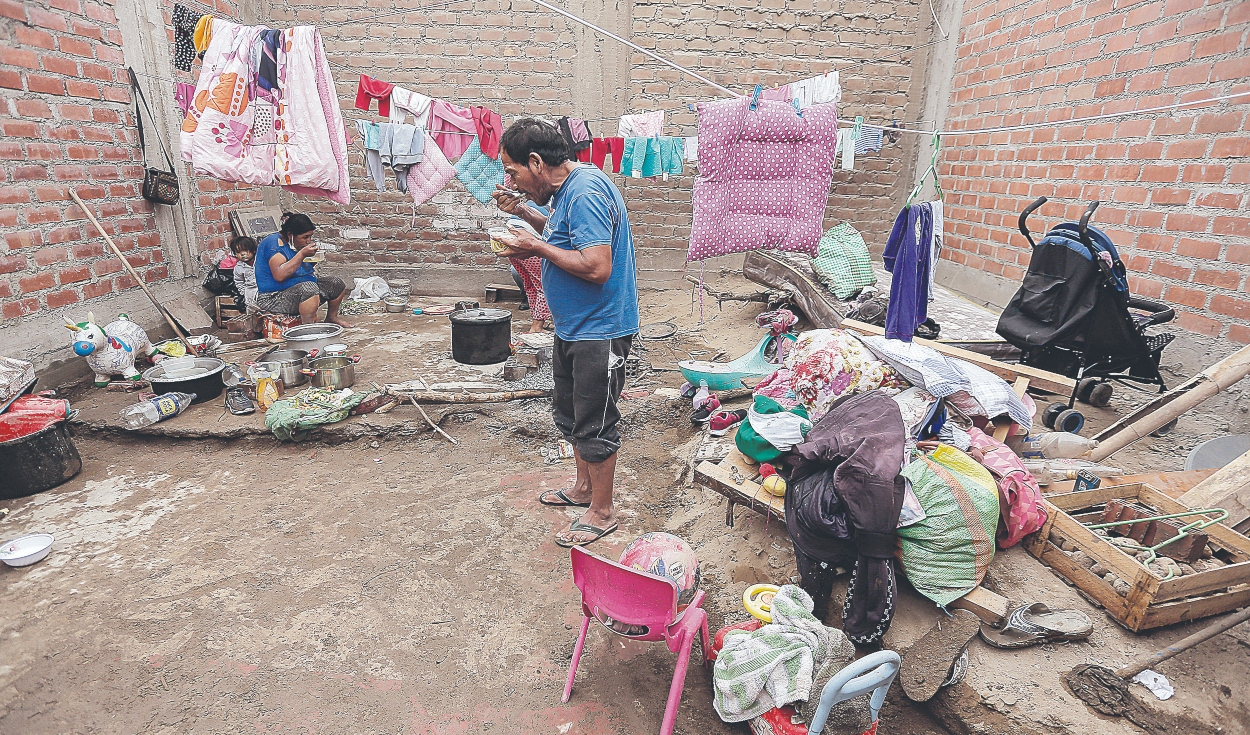
The recession that occurred during the first year of Dina Boluarte’s government left 60.4% of Peruvians in poverty or on the verge of falling into it.
The numbers speak: 9 million 780,000 are poor (29% of the population) and 10 million 590,000 are vulnerable (31.4%), according to the recent report from the National Institute of Statistics and Informatics (INEI).
“We can affirm that real poverty covers 60% of Peruvians because the vulnerable are half a step away from poverty. There is not much difference between someone who covers the entire cost of the basic basket (of S/446) and someone who covers it for two, five or ten soles. Technically in reality, these people are poor,” former Vice Minister of Employment Promotion Fernando Cuadros Luque said for La República.
Compared to 2019, the universe of vulnerable people fell 2.6 percentage points (pp) – it fell from 34% to 31.4% – because they were absorbed by poverty, according to specialists consulted by this newspaper for the latest reports.
Cuadros Luque points out that after the economic reactivation of 2021, poverty was reduced by just over 5 pp, but with the rate of 3.1% that is estimated for 2024, there will not be a substantial change because income does not keep pace. pace than prices – real incomes are 9% lower than in the pre-pandemic year – and the political noise affects those who manage the market.
Example: the downgrade of credit ratings and outlooks in agencies such as S&P and Fitch Ratings due to the lack of governance and precariousness of democracy make international financing more expensive for private sector companies, which translates into lower generation. of jobs and price increases for everyone. “If we continue as we are, it can get worse,” adds the labor activist.
For his part, Víctor Fuentes, public policy manager of the Peruvian Institute of Economics (IPE), assures that there is no way to reduce poverty – and vulnerability – if we do not return to annual GDP rates of between 4% to 5%. as before the pandemic. The IPE estimates a variation of 2.4% for the current period and it will not be enough to generate jobs and incorporate the 300,000 young people who enter the labor market annually.
What should the Government do?
According to Carolina Trivelli, former head of Midis and principal researcher at the Institute of Peruvian Studies (IEP), the solution is to reinforce Qali Warma, since 46% of poor households have at least one beneficiary, and given the drop in income and lower spending capacity, increasing children’s nutrition, both quantitatively and qualitatively, would help families save part of their budget.
Likewise, it recommends expanding programs such as Pensión 65 and bringing it to the urban area, considering that in this area poverty went from 14.6% to 26.4% since 2019. And, finally, it maintains that through together, if focused In homes with young children in urban areas, it will have a positive impact to prevent them from having food deficiencies in the first 1,000 days of life.
The profile of the home and the poor Peruvian
According to him INEI, 54.2% of poor households have access to sewage and 9.5% are overcrowded. 92.1% have a mobile phone, but 15.2% have a computer or laptop. Only 32.9% have internet.
Likewise, 83% of the poor go to school, 77.3% are insured in the SIS and 89.2% work informally.
97% of the extreme poor are informal and 86.6% access the SIS; and as for the home, 33.5% have drainage, but 14.8% are overcrowded.
Loreto is the region with the highest rate (72.6%) of the population without access to water, sanitation and electricity and Puno (83.5%) without access to water, electricity, telephone and internet.
Data
The universe of poor grew by 8.8% between 2019 and 2023: 3 million 290,000 more people.
S/446 is the poverty line managed by the INEI and below S/251 is considered extremely poor.
Source: Larepublica
Alia is a professional author and journalist, working at 247 news agency. She writes on various topics from economy news to general interest pieces, providing readers with relevant and informative content. With years of experience, she brings a unique perspective and in-depth analysis to her work.












